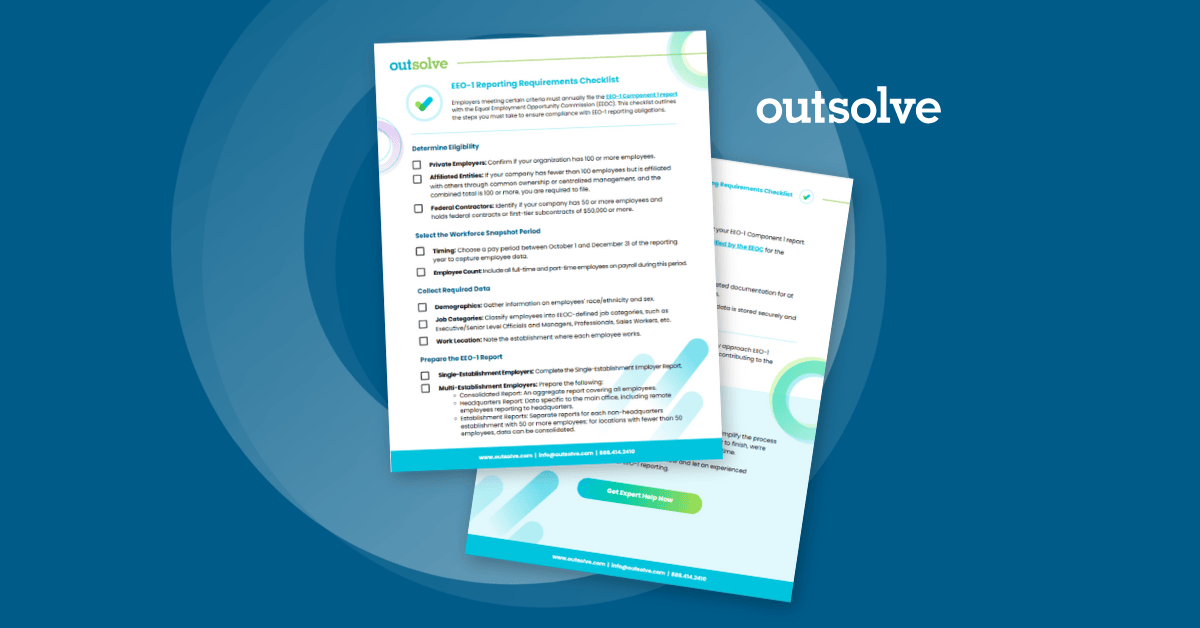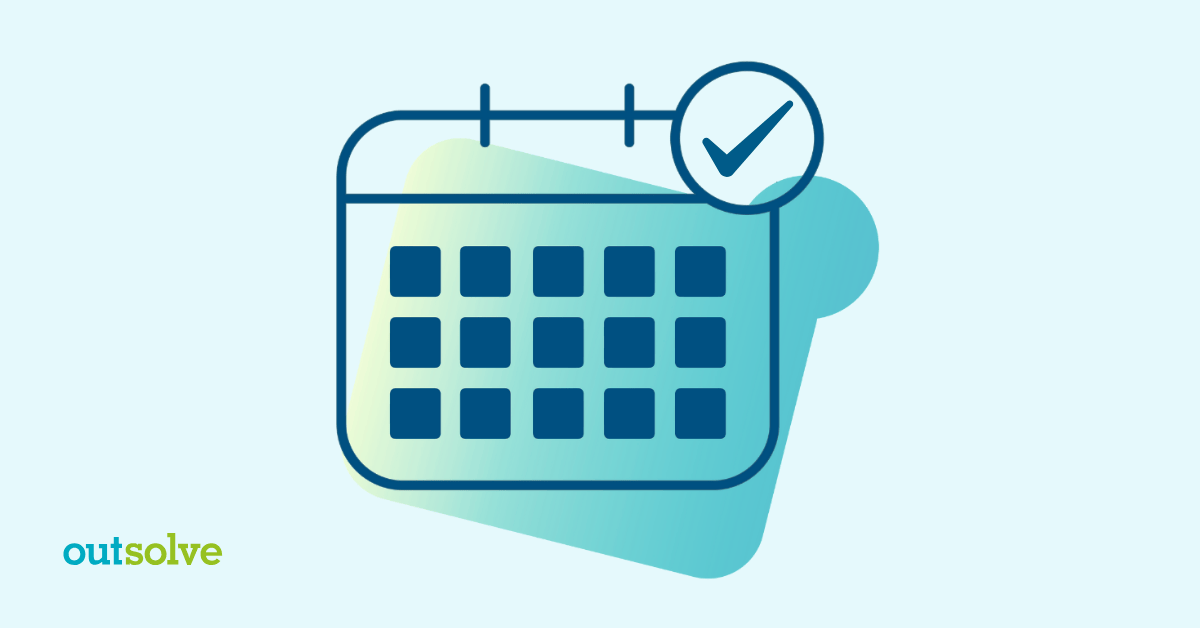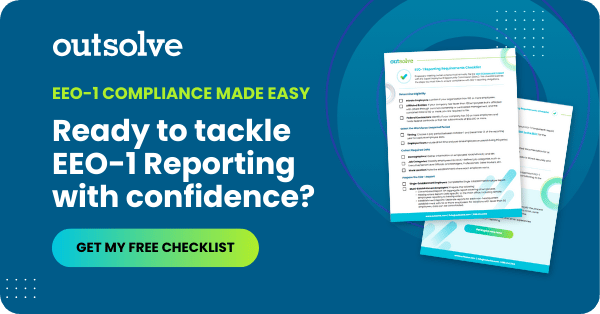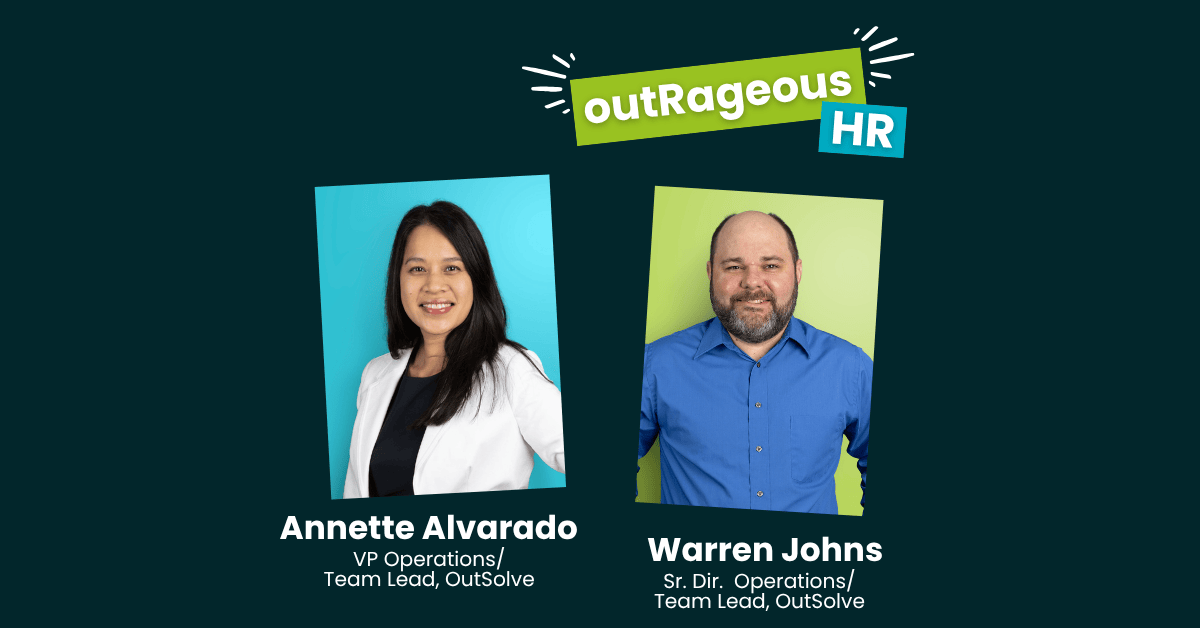3 min read
How to Prepare and File Your EEO-1 Report with Confidence
 Chris Foley
:
May 28, 2025 3:16:45 PM
Chris Foley
:
May 28, 2025 3:16:45 PM

Preparing your EEO-1 Report may seem overwhelming and another deadline to hit, especially on top of all the other daily tasks you have on your plate. It doesn’t have to be! EEO-1 Report filing begins with one important step, determining whether your organization is required to file. From there, understanding what data to collect, how to format it, and when to submit it can make the process seamless.
We break down the EEO-1 reporting process into clear, actionable steps to help you stay compliant, avoid costly errors, and file with confidence. Let’s start at the beginning: Do you need to file an EEO-1 Report this year?
Determine Filing Eligibility
The first step is to determine if you actually need to file the report. There are three groups of organizations that fall into that bucket. If you identify with any of the following, then you must complete an annual EEO-1 Report:
- Private Employers: Your organization has 100 or more employees.
- Affiliated Entities: Your company has fewer than 100 employees but is affiliated with others through common ownership or centralized management, and the combined total is 100 or more.
- Federal Contractors: If your company has 50 or more employees and holds federal contracts or first-tier subcontracts of $50,000 or more.
After you determine you are required to submit an annual EEO-1 Report, it’s time to start collecting your data. You will first choose a snapshot period. The snapshot period is defined as the time period a company chooses to pull their data from for the EEO-1 Report. A few things to keep in mind when selecting your workforce snapshot period:
- Timing: Choose a pay period between October 1 and December 31 of the reporting year to capture employee data. Please remember that you are filing the report for the previous year's data. If you are filing in 2025, it would be for 2024 data.
- Employee Count: Include all full-time and part-time employees on payroll during this period.
Collect Required Data
Once you have your snapshot period identified, now is the time to gather the required data for the report. You’ll need to gather the following for all full-time and part-time employees on your payroll during your snapshot period:
- Demographics: Gather information on employees' race/ethnicity and sex.
- Job Categories: Classify employees into EEOC-defined job categories, such as Executive/Senior Level Officials and Managers, Professionals, Sales Workers, etc.
- Work Location: Note the establishment where each employee works.
Prepare the EEO-1 Report
Data is gathered and now your EEO-1 Report must be prepared! First you will determine whether or not you are a single-establishment or multi-establishment employer. The reports that need to be submitted are different for each:
- Single-Establishment Employers must prepare the following:
- Complete the Single-Establishment Employer Report.
- Multi-Establishment Employers must prepare the following:
- Consolidated Report: An aggregate report covering all employees.
- Headquarters Report: Data specific to the main office, including remote employees reporting to headquarters.
- Establishment Reports: Separate reports for each non-headquarters establishment with 50 or more employees; for locations with fewer than 50 employees, data can be consolidated.
Data is prepared and now is the time to file the report before the annual deadline. The filing window for 2024 EEO-1 data ran from May 20, 2025, to June 24, 2025 and is now closed. Please subscribe to OutSolve’s newsletter for updates on 2025 data collection as it becomes available.
- Filing System: Use the EEOC's online portal to submit your EEO-1 Component 1 report.
- Deadline: Adhere to the submission deadline specified by the EEOC for the reporting year to avoid penalties.
Report has been filed and the hard work is complete. Congratulations! But it doesn’t stop there. There are certain record-keeping requirements for previously submitted reports. Follow this guidance to make sure you are retaining proper documents:
- Retention Period: Keep copies of EEO-1 reports and related documentation for at least one year, or as required by applicable regulations.
- Confidentiality: Ensure that all collected demographic data is stored securely and access is limited to authorized personnel.
What the EEO-1 Checklist Means for Your Organization
Navigating the EEO-1 reporting process requires attention to detail, accurate workforce data, and a thorough understanding of the filing requirements. By following the above steps, you’ll be on your way to meeting the EEOC’s requirements and filing deadlines.
You don’t have to do it alone. OutSolve’s compliance experts have helped thousands of organizations prepare and file their EEO-1 Reports quickly, accurately, and on time. Whether you're a private employer, federal contractor, or part of a multi-establishment structure, we tailor support to fit your needs.
Connect with our team today and let us take EEO-1 reporting off your plate, so you can focus on the bigger picture. Join our vibrant HR community on Slack to ask fellow HR professionals how they are tackling this mandatory, often complex, report.
Chris is a Consultant with OutSolve, specializing in the EEO-1 Report. He also supports team projects including data preparation, plan development and quality control.
Weekly OutLook
Featured Posts

The Federal Government Shutdown Lingers: HR Professionals Take Action

HR Planning: 5 Planning Steps for Q4
Related Posts

Federal Contractor Compliance: What HR Teams Need to Budget For in 2026
2026 is quickly approaching, and HR professionals working in federal contractor organizations have more than just recruiting goals, engagement...

CHRO Survival Guide: Talent, Culture, and Leadership: How CHROs Can Thrive in Uncertain Times
In Part 2 of our CHRO Survival Guide series, we explored the costs of deregulation, the intensity of I-9 and E-Verify enforcement, and the impact of...

The Federal Government Has Reopened: What’s Next for Federal Contractors
As non-essential government offices reopen, human resources, EEO, and compliance professionals in government contractor workplaces may want to...


